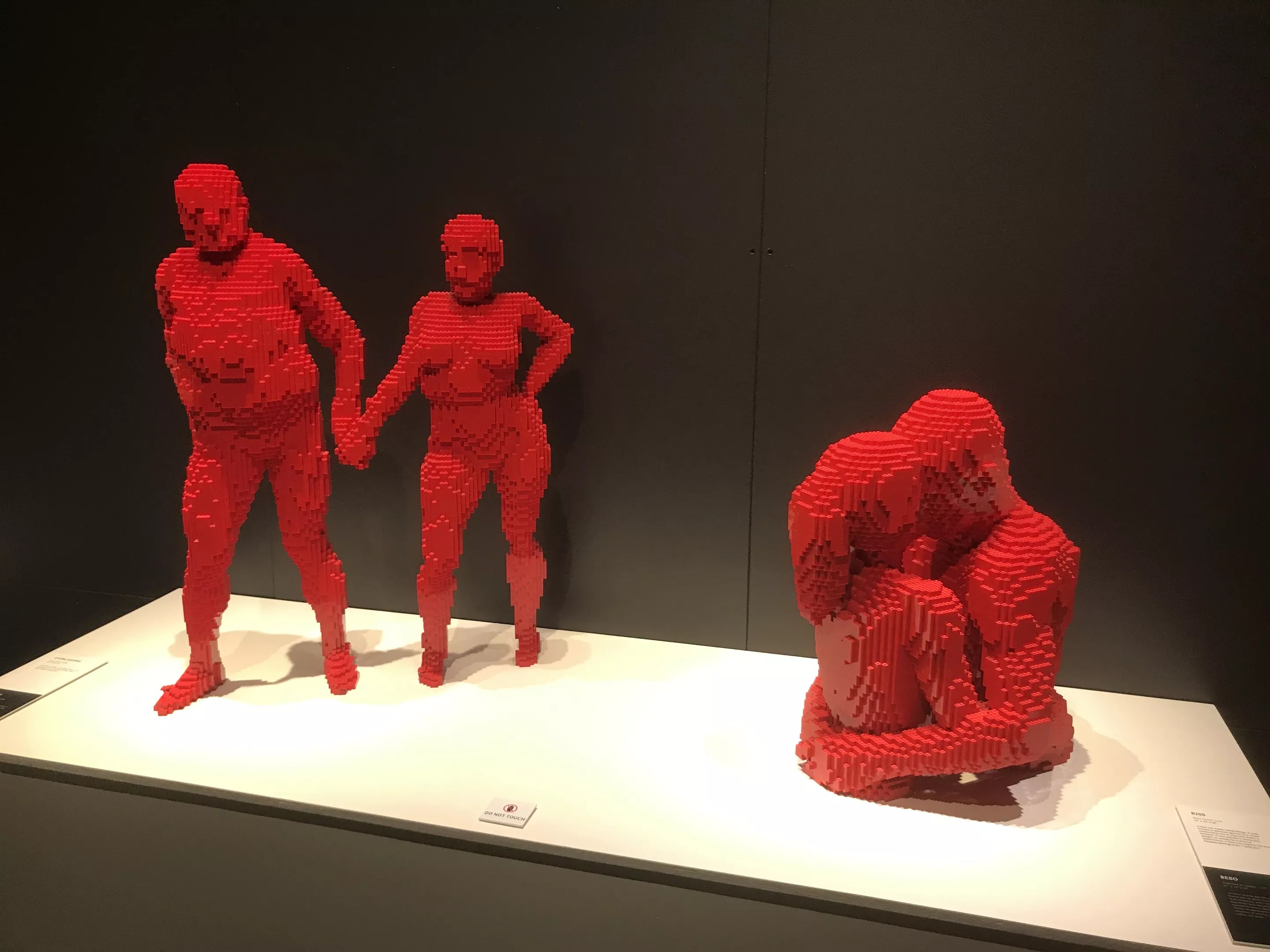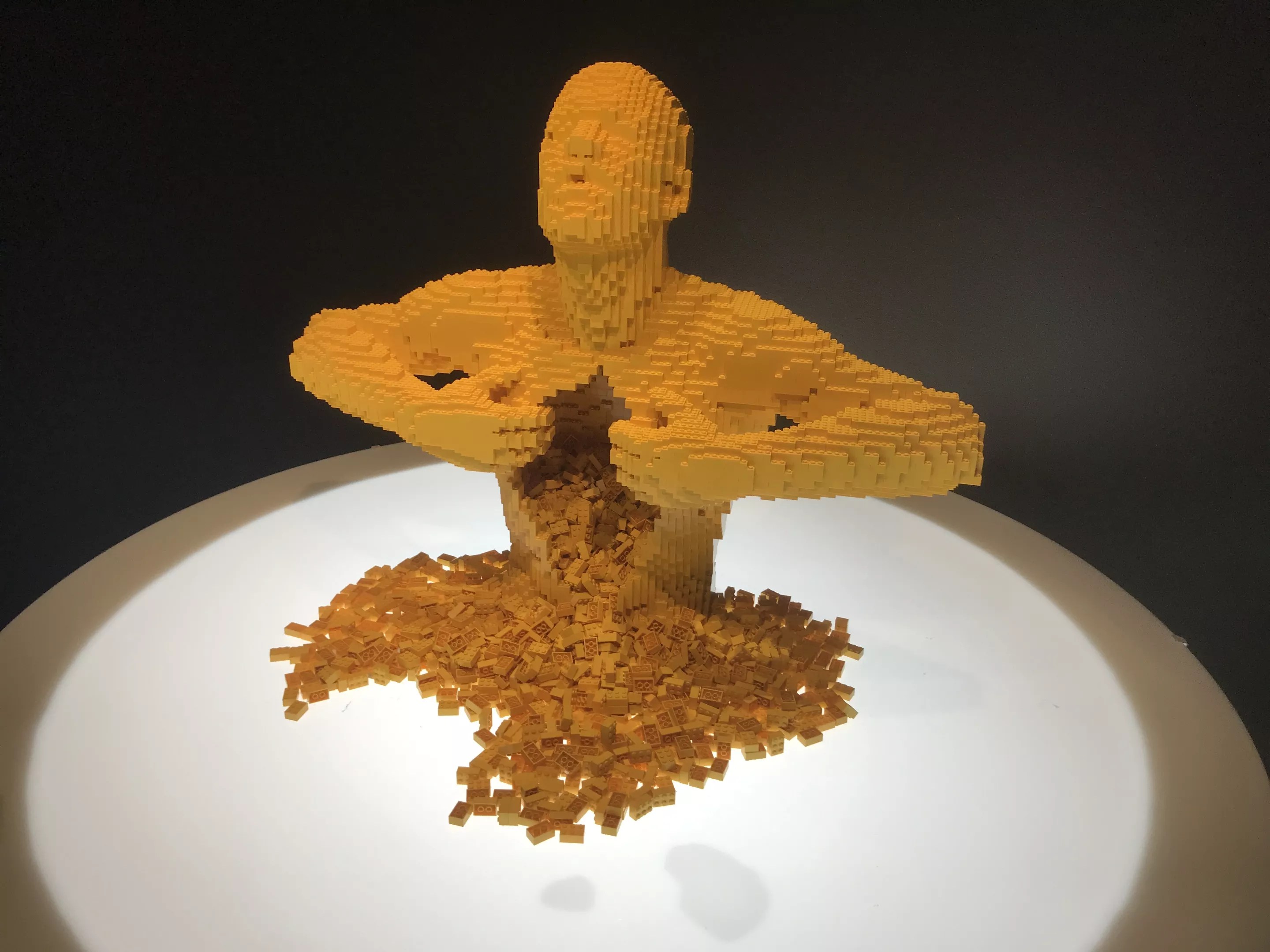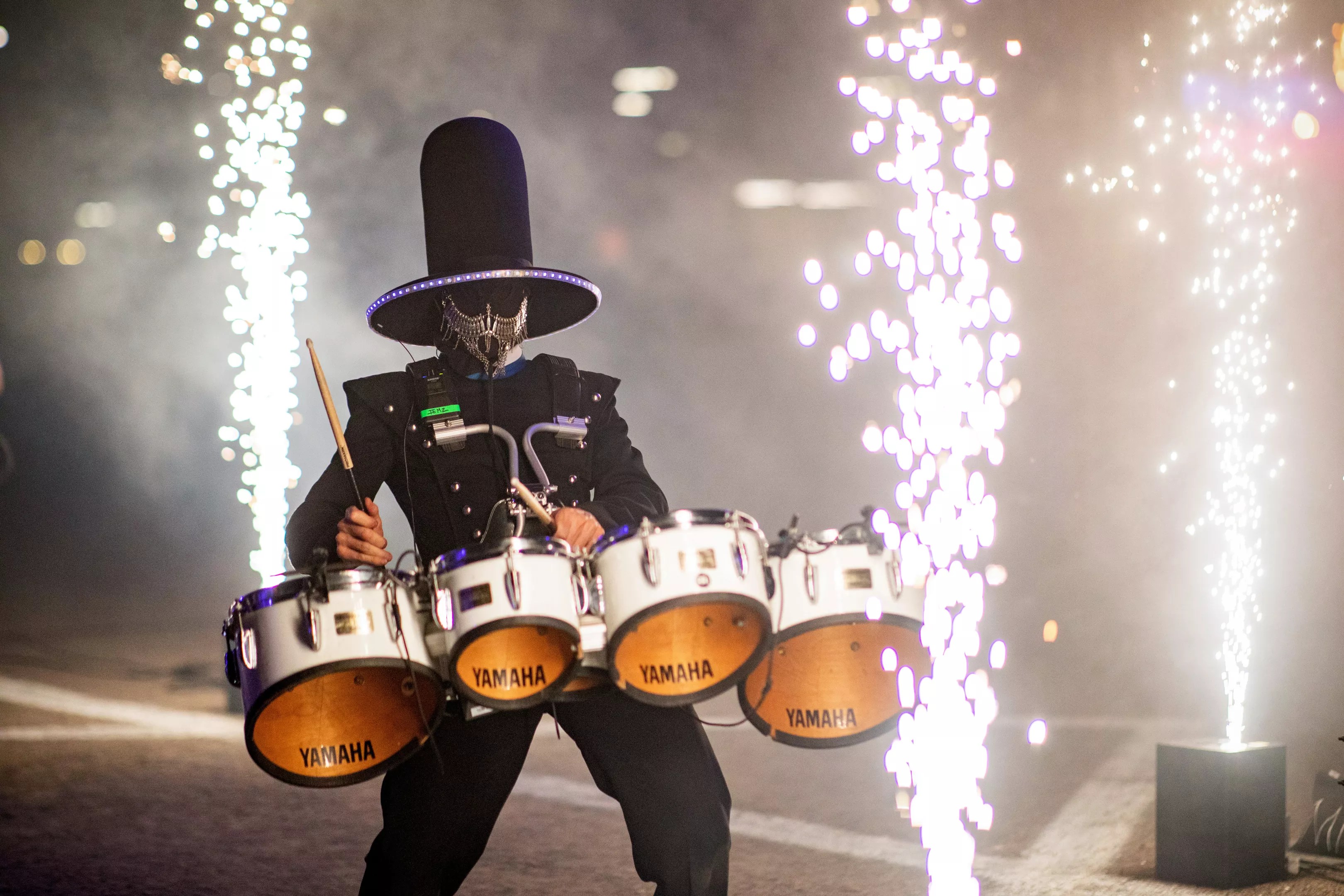
Kyle Harris

Audio By Carbonatix
Arrive at the Denver Museum of Nature & Science on schedule. The grounds around the building are as devoid of humans now as they were when the museum was closed during normal times, before the pandemic. Nothing’s normal now, though, except for the Tyrannosaurus Rex looming as you enter, a chilling reminder of mass extinctions.
Six months after the first case of COVID-19 was diagnosed in Colorado, there is no line waiting to get into the museum, though there are well-branded labels on the ground indicating where to stand at a distance from other parties, on the off-chance that other parties are actually there. Dig through your email for the tickets you purchased online before approaching the masked ticket-taker eyeing you from behind a plexiglass shield. Behave. She doesn’t want this deadly disease any more than you do.
“Enjoy the museum all to yourself,” she says as she swipes the QR code on your phone. You laugh, nervously. She keeps working, waiting for the next visitor who could be carrying the coronavirus to walk through the door.
Outside of two barebacking families with nude grins on the third floor, everybody, from customers to security to janitors, wears a mask. The lobby’s not crowded. School groups don’t clog the escalators. A murder of booger-nosed children is not knocking into you. There’s not a crusty nostril or Cheeto-stained lip in sight. Even The Art of the Brick – an exhibition of Nathan Sawaya‘s surprisingly emotional LEGO art that would typically be jam-packed, shoulder to shoulder, like rush hour on the Colfax bus, only louder – is as deserted as a commercial gallery in the middle of the week.
Things feel safe, even tranquil. As quiet as a funeral.
This is what it’s like at many of the big museums and cultural institutions around town. The quiet would be a relief from the norm were it not for a deadly virus killing millions around the globe, and the knowledge that decreased ticket sales means increased fiscal woes that could also be deadly for museums.

Kyle Harris
Those woes, of course, are status quo these days for cultural institutions both large and small, and a frightening setback for the creative sector, which grew in Denver by 29 percent from 2010 to 2019. That figure comes from an August Denver Arts & Venues report on the city’s culture economy, a document filled with unsettling data. The worst: “The report estimates that between April 1 and July 31, 2020, Denver’s creative industries will lose an estimated 29,840 jobs and $1.4 billion in sales revenue due to the COVID-19 crisis.”
The report has a few recommendations for how foundations, donors and government entities can toss buoys to local arts and entertainment organizations so that they might not drown. If they find the resources to survive, there’s a good chance the creative sector will eventually recover and even continue to grow.
But funding the arts – especially during a recession and a pandemic, when people are facing evictions and hunger – isn’t always a popular move.
Gary Steuer, head of the Bonfils-Stanton Foundation, a heavyweight arts funder, says he’s been dealing with naysayers questioning the value of arts funding when so many people are struggling to make enough to buy food, much less pay the rent.
“It is a question that I have had to respond to and talk about,” he says. “At the most basic level, the arts are employing people. In the same way we want to make sure restaurant workers don’t starve, we want to make sure arts workers don’t starve.”
But there are other reasons to keep the arts afloat: They bring us joy and respite, comfort and educate us. “All those things are more important now in this time of crisis,” he says.
Steuer and other funders have been doing their part to keep arts groups going. The Bonfils-Stanton Foundation gave a million to the COVID-19 Arts & Culture Relief Fund and recruited the Denver Foundation, which gave $50,000, to administer it. That inspired donors from the Gates Family Foundation to Denver Arts & Venues, the Kemper Charitable Trust and some individuals to contribute more than $700,000. The total raised for the fund was split between 42 groups, including Access Gallery, Art From Ashes, Phamaly Theatre Company and Youth on Record.
The foundations are planning to give more in the months to come, deciding who to help based on how much the groups need, how innovative they’ve been through the closures, and how willing they are to restructure to survive.
In the meantime, the Colorado Artist Relief Fund, a joint project of RedLine Contemporary Art, the Andy Warhol Foundation, the Denver Arts & Venues Imagine 2020 Artist Assistance Fund and Colorado Creative Industries, has been giving $1,000 grants to individuals working in the creative sector.
While the Denver Zoo and the Denver Botanic Gardens were among the first big institutions to reopen, their attendance has been slashed by capacity requirements, and the Gardens canceled its summer concert series. All that makes additional individual donations and fundraisers, such as the DBG’s Fête des Fleurs gala, which moved online in August, and the Zoo’s in-person Flock Party on September 12, all the more important.
Performance arts groups are among those hit hardest by the pandemic, because most can’t find a way to reopen safely and not incur a financial loss. Because summer is a slow season for many of them in good times, their budgets don’t necessarily reflect how bad things are going to become by winter…and winter is coming.
Many, like the Denver Center for the Performing Arts, have had to cancel much of their 2020/2021 seasons. The Colorado Ballet axed its cash-cow annual production of The Nutcracker. Many groups have already laid off or furloughed staff. Even those moving forward with productions, like the Aurora Fox, will do so for drastically smaller audiences. In order for arts groups to survive, grants matter.
While the nonprofit cultural organizations have foundations on which they can pin their hopes, commercial operations have fewer options. With their doors shuttered, art galleries quickly set up online exhibitions, auctions and stores where collectors could browse and buy.

Film on the Rocks – Drive-In continues into September.
Denver Arts & Venues
Most galleries reopened alongside stores earlier in the summer, and some report an actual increase in sales.
Carrie MacKenna, who co-founded D’art Gallery in August 2019, says that her cooperative, which was shut down for two months and was one of the first to reopen at a limited capacity, has upped its online marketing…and it’s paid off. “We’ve actually had higher art sales in the past two months than we had in almost the last year,” she notes.
With people spending so much time in their homes, they care more about what their living environments look like, she guesses. And because they’re not going out and spending money, those lucky enough to still be employed have the cash to buy original art.
Because of low crowds and ample room, galleries are also one of the few places where people may feel comfortable inside.
“We’ve had quite a lot of traffic,” MacKenna says. “People want to get out and do something. The reality about galleries is that they are low-touch, distance-oriented places anyway. Small groups of people coming in who already know each other can stick together.”
While many cultural groups are still trying to reopen, others are exploring alternative approaches. Dance companies like Cleo Parker Robinson, which is celebrating its fiftieth anniversary in quarantine, and Wonderbound have offered online productions. Central City Opera is streaming solo outdoor performances on social media.

Itchy-O has found a way to play live during the pandemic.
Alyson MacClaran
The experimental circus troupe Rainbow Militia staged a performance piece in a soon-to-be-demolished house, Buntport Theater launched an outdoor production that sold out quickly, even in its current reprise, and the experimental percussion band Itchy-O has held rituals in the Mission Ballroom parking lot over the past few weekends.
Drive-ins and mural events have become all the rage. Denver Film rebooted Film on the Rocks in a Red Rocks parking lot. Street art festivals have been popping up all over the Front Range, while muralists have been tackling the social issues of the day, condemning police killings and praising essential workers.
Artist and gallerist Doug Kacena of K Contemporary is one of the forces behind ArtFindsUs. That monthly event sends artists, musicians, dancers and other performers around town on trucks and pedicabs, carting art to neighborhoods where people may be too cautious to go out.
Kacena’s study of stoicism has helped him navigate the shutdown and stay productive. Like many creative entrepreneurs, he’s used this period to invest in fresh ways of exhibiting work, from projecting gallery performances on buildings around the city to showcasing paintings on the billboard trucks that strip clubs so often use to advertise.
Shifting with the times has also protected Kacena’s space from extinction. “The obstacle is the way,” he says. “It’s been helpful thinking of that.”